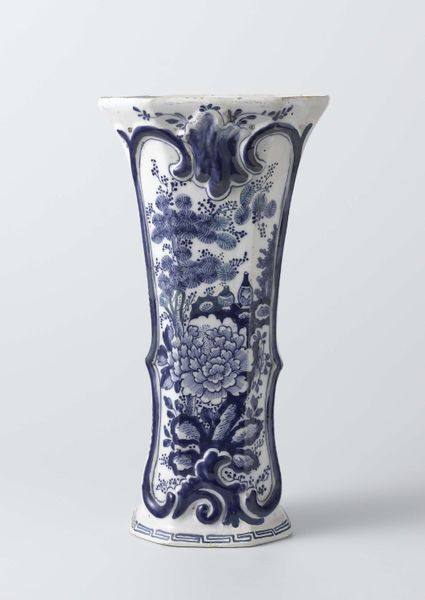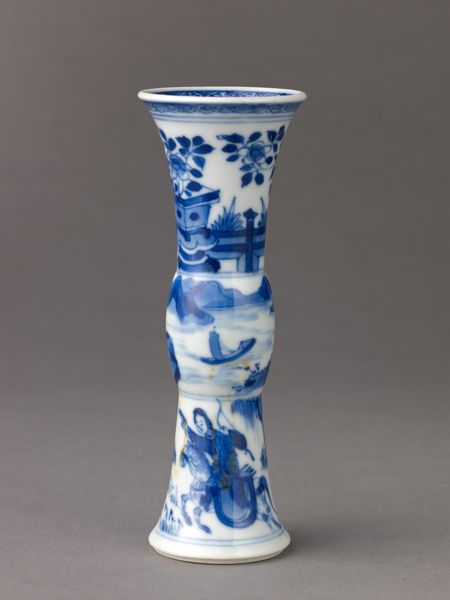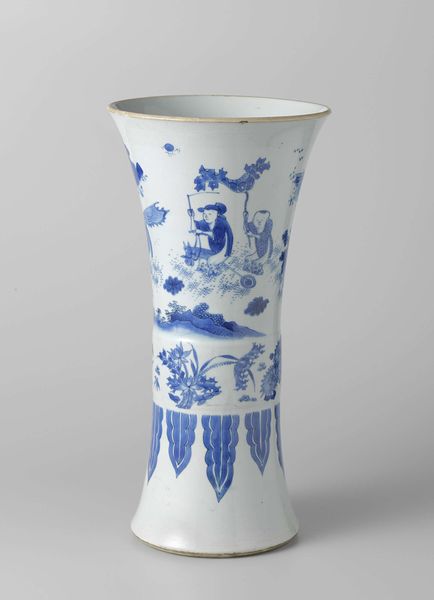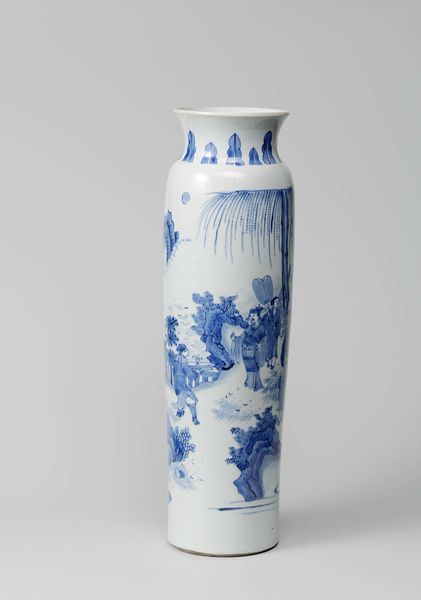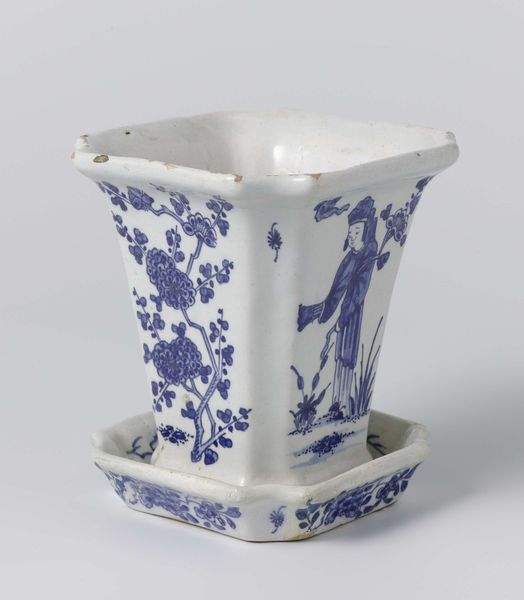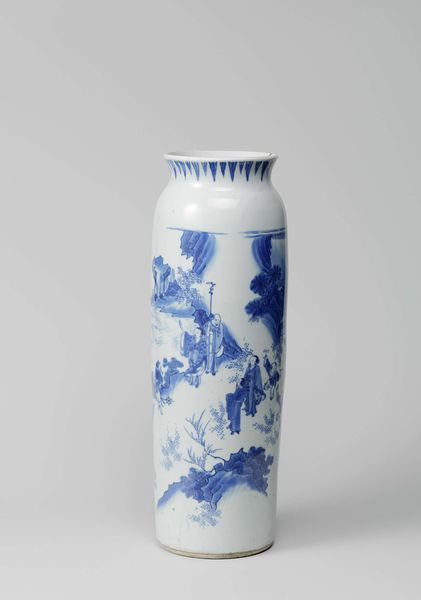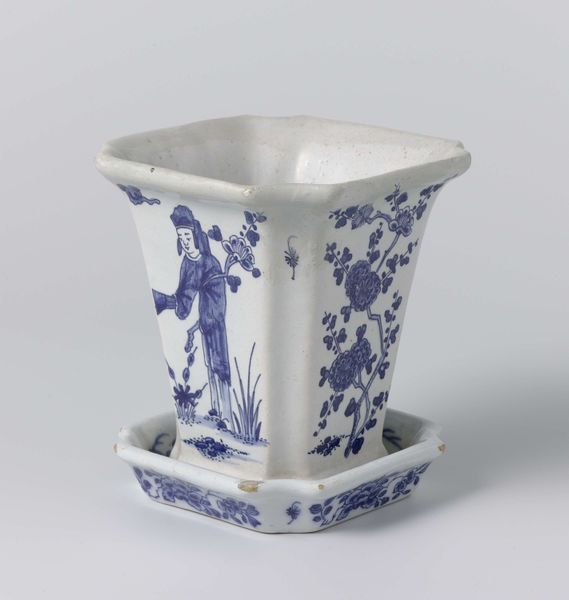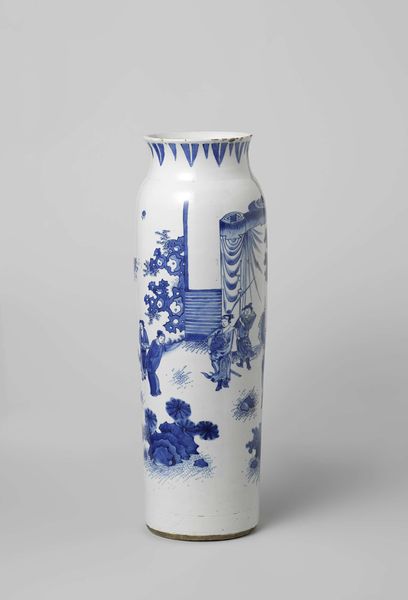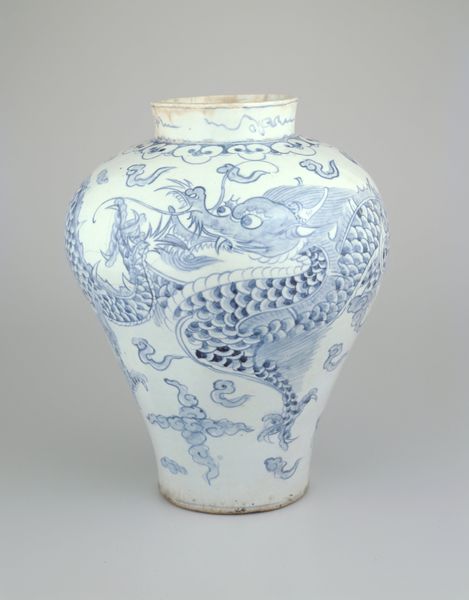
#
3d sculpting
#
egg art
#
3d printed part
#
jewelry design
#
culinary art
#
appetizing
#
food illustration
#
stoneware
#
wash background
#
ceramic
Dimensions: height 23 cm, diameter 13 cm
Copyright: Rijks Museum: Open Domain
This vase was produced by De Porceleyne Byl using tin-glazed earthenware. The blue and white palette is typical of Delftware, echoing the aesthetic of Chinese porcelain that was highly prized in Europe. Delftware wasn’t made with the same refined materials and meticulous processes as true porcelain. It relied on readily available clay, coated with a tin glaze to imitate the smooth, white surface of porcelain. The painted decoration, often featuring landscapes and figures, was applied by skilled artisans. The contrast between the vase's delicate imagery and the relatively coarse material reveals much about the economic and social context of its production. Delftware allowed a wider market to enjoy decorative objects, even if they weren’t made of precious materials. The skilled labor involved in shaping, glazing, and painting each vase speaks to the importance of craft within the Dutch economy. Paying attention to materials and modes of production helps us understand the history embedded in this object, challenging traditional distinctions between fine art and craft.
